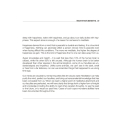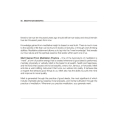ancient stories : ค้นหาหนังสือธรรมะ หน้า 9 / 10
หน้าหนังสือทั้งหมด

63
Understanding Paccekabuddhas in Buddhist Philosophy
V. Reference 2: Dhammakāya and Paccekabuddhas
A Paccekabuddha is counted as one of the two types of Buddhas. According to Buddhist philosophy, a Paccekabuddha is a person who is of the highest wisdom
This text discusses the concept of Paccekabuddhas, individuals of high wisdom who achieve self-enlightenment but lack the ability to teach. It explores scholarly arguments about the pre-Buddhist origi

85
Academic Studies on Buddhism
Mus, Paul. Barabudur: Sketch of a History of Buddhism Based on Archaeological Criticism of the Texts. New Delhi: Indira Gandhi National Centre for the Arts: Sterling Publishers, 1998.
Need, David Nort
This collection features key academic contributions to the study of Buddhism, drawing from archaeological criticism, doctrinal analyses, and comparative studies between traditions. Works by notable sc

87
Buddhist Manuscripts in China: Theravāda Buddhism in Sipsong Panna
Buddhist Manuscripts in China: A Case Study of Theravāda Buddhist Manuscripts in Sipsong Panna (Xishuangbanna, Yunnan Province, PRC)
Joe Zhou Ya
China, like many other countries in the world, is a c
This article delves into the rich tapestry of Buddhist culture in China, specifically focusing on the Theravāda Buddhism of the Dai people in Sipsong Panna, Yunnan Province. Buddhism's introduction to

126
An Shigao's Influence on Anban Sutras
From Sengyou’s CSZJJ, we learn that there are two Anban[shouyi] jing sutras which were translated by An Shigao:37
安般守意經一卷 安錄云:『小安般經』。(CSZJJ p.5c 23: “corresponding to a Smaller Anban jing”
大安般經一卷(CSZJ
This content examines An Shigao's translations of Anban sutras, highlighting the distinctions between the Present Da Anban shouyi jing and the Kongo-ji Anban shouyi jing. The text discusses the integr

132
Daoist Meditation in the Eastern Han Period
Daoist meditation in the Eastern Han period
When An Shigao arrived in China around 148 CE, very few if any Buddhist meditation texts had been translated into Chinese.60 However the Chinese people were
In the Eastern Han period around 148 CE, Daoist meditation practices already existed, with references found in ancient texts like the Tao Te Ching. Practitioners sought immortality through various tec

44
The Nature of Existence and Evidence
18. ' Even though Master Kassapa says this, it still appears to me that not one of those things exists. '
' Have you any further evidence, Prince ? '
' I have, Master Kassapa.'
' What might that be
In this excerpt, Prince engages in a philosophical discussion with Master Kassapa about the existence of the soul. The Prince presents a scenario where a felon is punished severely, questioning the ab

33
Studies on Buddhist Philosophy and Texts
AKANUMA, Chizen (赤沼智善).
1925 "Bunbetsu-ronsha-ni-tsuite" 分別論者に就いて(研究)
について
宗教研究25: 43-64
CHOU, Jouhan (周 柔含).
2006 "Hiyusha-nitsuite-no-ichi-kōsatsu"「響鳴者」について
の考察(An Investigation of the
This collection of studies presents significant research on Buddhism, particularly focusing on various philosophical aspects. Works by scholars such as Chizen Akanuma and Jouhan Chou delve into the co

3
Analyzing the Dhammacakkappavattana Sutta: A Text-Critical Approach
The Document Research Methods
Case Study: The Dhammakakkappavattana Sutta
Pramaha Pongsak THANIO
Abstract
Dhammacakkappavattana Sutta (Sanskrit: Dharmacakaravartana
Sutra) is regarded as one of the
The Dhammacakkappavattana Sutta, a key Buddhist text, shows multiple versions arising after the Buddha’s death, raising authenticity questions. This research employs text-critical methods to establish

561
Early Influences and Studies in Buddhism
Bumbacher, Stephan Peter. 2007. "Early Buddhism in China: Daoist Reactions." In A. Heirman and S. P. Bumbacher, eds., *The spread of Buddhism*, pp. 203-246. Leiden: Brill.
Chandawimala, Rangama. 2013.
This compilation examines significant scholarly works on early Buddhism, including Stephan Bumbacher's study of Daoist reactions to Buddhism in China, and Rangama Chandawimala's analysis of the Abhaya

82
Buddhist Manuscripts and Literature from Central Asia
Karashima, Seishi and Wille, Klaus (TextsEditors-in-chief). 2009.Buddhist Manuscripts from Central Asia- The British Library Sanskrit Fragments, Volume II.1-2, Tokyo: The International Research Instit
This document highlights important works and contributions in the field of Buddhist literature and manuscripts from Central Asia. It references various authors and their significant texts, such as 'Bu

64
Generosity of Offerings in the Pali Canon
He gave 84,000 milk cows with tethers of fine jute and copper milk pails. He gave 84,000 maidens adorned with jeweled earrings. He gave 84,000 couches spread with long - fleeced coverlets, white wool
This text describes an extravagant offering of 84,000 milk cows with jute tethers and copper pails, maidens adorned with jewelry, luxurious couches, and an abundance of fine cloth. The descriptive ima

91
The Joy of Meditation
sleep with happiness, wake with happiness, and go about our daily duties with happiness. This aspect alone is enough of a reason for someone to meditate.
Happiness derived from a mind that is peacefu
Meditation promotes lasting happiness derived from a peaceful mind, enabling individuals to face life's challenges unscathed. It helps purify mental impurities, enhances cognitive faculties, and unloc

94
90 Benefits of Meditation
90 MEDITATION BENEFITS
lived to be true ten thousand years ago should still be true today and should remain true ten thousand years from now.
Knowledge gained from meditative insight is based on rea
Meditation offers profound insights that connect us to our true essence and spiritual nature. It generates 'merit,' which is a form of positive energy originating from good deeds. Merit is essential f

15
Taming the Mind to Raise its Quality
TAMING THE MIND TO RAISE ITS QUALITY
Meditation is a legacy passed down from the wisdom of the ancients. The ancients recognized the need to preserve the quality of the mind and placed more importanc
Meditation is an ancient practice aimed at preserving the mind's quality over material wealth. The ancients knew that true prosperity lies in inward focus, connecting with the center of our being. By

4
แนวคิดเกี่ยวกับอันตระภาวะในประเพณีอภิธรรม
ธรรมนาว วรรณารักรการชาราวพรฒครสถานา
ปีที่ 7 ฉบับที่ 2 (ฉบับรวบรวมที่ 13) ปี 2564
106
The Notion of Antarābhava in Abhidhamma Traditions
Prapakorn Bhanussadit
Abstract
"Antarābhava" or an "interme
บทความนี้สำรวจแนวคิดของ 'อันตระภาวะ' ซึ่งเป็นสถานะระหว่างความตายและการเกิดใหม่ โดยเฉพาะในการอภิปรายระหว่างคณะพุทธศาสนาต่างๆ ในอินเดียโบราณ ปัญหาพื้นฐานคือชีวิตหนึ่งติดตามอีกชีวิตหนึ่งทันทีหรือมีช่วงพั

65
นิรวาณและแนวคิดในพุทธศาสนา
นิรวาณ Nirvana
อายะ/อารยัน Aryans, ancient people of Asia who spoke an Indo-European language and called themselves Ariyas (“noble ones”). Sometime between 2000 B.C. and 1000 B.C. the Ariyas migrated
บทความนี้สำรวจแนวคิดสำคัญในพุทธศาสนา รวมถึงนิรวาณ ซึ่งเป็นเป้าหมายสูงสุดในการเข้าถึงการหลุดพ้นจากความทุกข์ อธิบายการกำเนิดของอารยันและการย้ายถิ่นไปยังอินเดีย พร้อมทั้งอธิบายวันอาสาฮิปูนชะ ที่พระพุทธเจ

8
The Role of Buddhism in Society
"Digested from speech of Pramạhā Boonthavy Vilaichakr Buddhism and Society
"Buddhism occurred 2500 years ago in India. Since then it has contributed a lot to the human civilization of both materialit
Buddhism, which originated 2500 years ago in India, has profoundly influenced human civilization both materially and spiritually. Its teachings guide individuals to avoid wrongdoing, purify minds, pro

125
Understanding Key Buddhist Concepts
"Fools" (palay): spiritually defective people. A fool is someone wicked, weak, or feeble in a moral sense. His discretion is faulty, not knowing right from wrong, good from bad. A fool is one who give
This content delves into various Buddhist concepts such as 'fools'—spiritually defective individuals whose actions reflect moral weakness. It explains that heaven in Buddhism comprises six levels prov

4
ความหมายและความสำคัญของกตัญญูและกฐินในพระพุทธศาสนา
กตัญญู grateful
กตัญญูเมื่อวาน the quality of being a grateful person; gratefulness; one who is thankful for the benefits received and reciprocates them
กตเวที one who reciprocates favors received
กตั
เนื้อหานี้สำรวจความหมายของคำว่า 'กตัญญู' ในพระพุทธศาสนา ซึ่งหมายถึงการที่บุคคลรู้คุณและตอบแทนต่อสิ่งที่ได้รับ อีกทั้งยังกล่าวถึง 'กฐิน' ซึ่งเป็นพิธีการถวายจีวรแก่พระสงฆ์ในช่วงฤดูปีบก โดยมีความสำคัญในก

29
Perfections in Buddhism: Understanding the Ten Perfected Virtues
บาลี (parami) 'Perfected Virtues'; 'Perfections'; transcendental virtues
บาลี ๑๐ ทัศ Ten Perfected Virtues (Ten Perfections) consisting of generosity, self-discipline, renunciation, wisdom, patience,
ศึกษาความสำคัญของทัศ 10 ประการในพุทธศาสนา ซึ่งประกอบด้วยความเอื้อเฟื้อ, การมีสติ, การสละ, ปัญญา, ความอดทน, การเพียรพยายาม, ความจริงใจ, การตัดสินใจ, ความเมตตา และความเป็นกลาง การปฏิบัติตามทัศเหล่านี้เป
